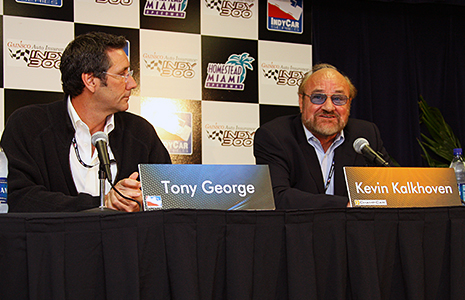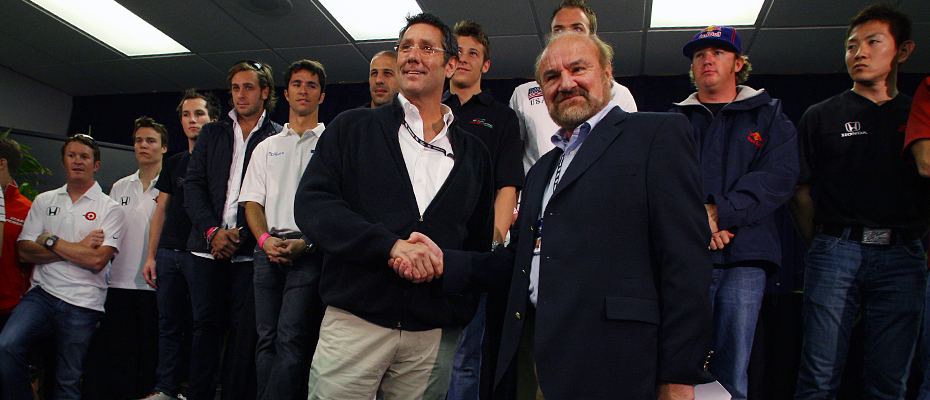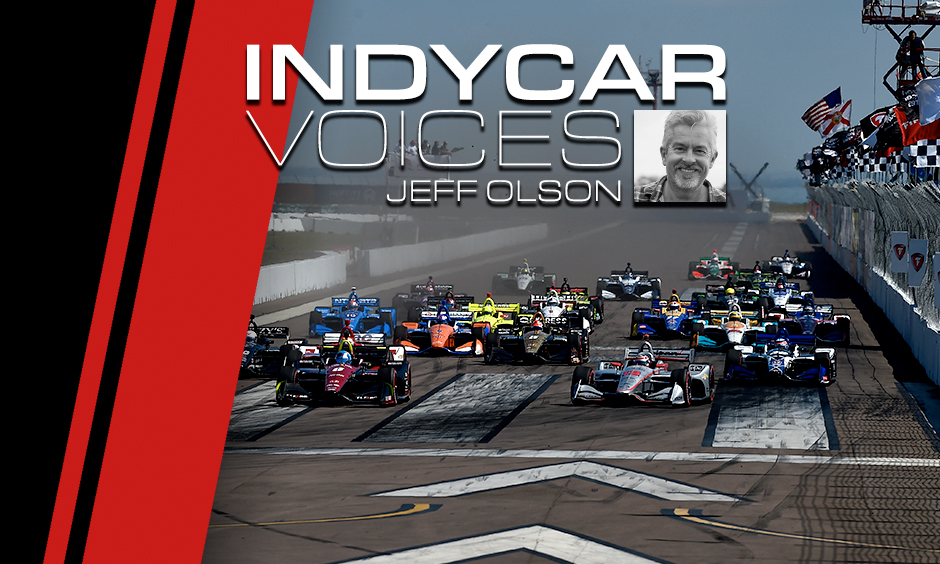A decade after unification, INDYCAR racing rising to new heights
FEB 27, 2018
It happened without fanfare, and it happened amid some confusion. Ten years ago last week, amid will-they/won’t-they reports, the Indy Racing League and Champ Car World Series confirmed that they would become one entity for the 2008 season.
A three-sentence news release was issued announcing unification on Feb. 22, 2008. Public acknowledgement came six days later.
 By then, inventories of teams’ equipment were already underway and the complicated process of preparing teams for a newly combined series had begun. The season opener at Homestead-Miami Speedway was just five weeks away, and teams that had been on the Champ Car side wouldn’t receive cars until just days before the first race.
By then, inventories of teams’ equipment were already underway and the complicated process of preparing teams for a newly combined series had begun. The season opener at Homestead-Miami Speedway was just five weeks away, and teams that had been on the Champ Car side wouldn’t receive cars until just days before the first race.
We can argue about the split until the end of time. Books will be written about it, fans likely will still be divided about the issue for generations to come. But if we draw the focus away from what had been a dark time to what has happened since, we find some fascinating stories.
Take, for one, the curious case of Will Power.
He was a rising star in Champ Car, winning two races in 2007 and finishing fourth in the final standings. But when the unification announcement was made, he and KV Racing Technology – co-owned by Kalkhoven, who’d been instrumental in talks with Tony George to bring the two series together, symbolized by their handshake agreement Feb. 28, 2008, at Homestead – had a short time to prepare for something they’d never seen.
“We got that car a couple of weeks before the first race,” Power recalled. “We had one test day at Sebring and went to Homestead. All of those Champ Car teams transitioning over had no oval experience, so we were really on the back foot there. It was a team that had no oval experience with a driver who had no oval experience. … It definitely was the most difficult year I’ve had in Indy car.”
Funny how things shake out. Power won the final Champ Car race at Long Beach in 2008 before landing the next season at Team Penske, where he has collected 29 of his 32 career wins in eight seasons and a championship in 2014. Power also picked up ovals in time, totaling six wins on the circular tracks since 2013 – including three of his last four victories.
Since 2010, Power has never finished outside the top five in the final standings. When the 2018 Verizon IndyCar Series season opens March 11 at St. Petersburg, he’ll again be among the favorites to win the championship of a series that continues an upward trajectory.
 For Power, unification was a critical tool. By 2008, the two biggest players in American open-wheel racing, Team Penske and Chip Ganassi Racing, had completed the transition from Champ Car to the IRL, which had added road and street courses to what had been an ovals-only format to evolve into what is now the Verizon IndyCar Series. Getting everyone on the same footing was essential for the sport, but also essential for its drivers.
For Power, unification was a critical tool. By 2008, the two biggest players in American open-wheel racing, Team Penske and Chip Ganassi Racing, had completed the transition from Champ Car to the IRL, which had added road and street courses to what had been an ovals-only format to evolve into what is now the Verizon IndyCar Series. Getting everyone on the same footing was essential for the sport, but also essential for its drivers.
“It was a remarkable period of time,” Power said. “Certain things had to fall into place for me to continue. The first thing was for me to be able to run with KV for the one year after unification happened. I was able to be in front of team owners who hadn’t seen me race before. Only the team owners in Champ Car knew what I could do and knew my results. None of the IRL team owners had seen me race, so it was good to get in front of them. That’s what led to being one of the guys Penske was looking at. I got that opportunity (in ’09), and it was definitely a big break.”
Like most drivers at the time, Power and his soon-to-be teammate wanted only to race against the drivers they weren’t racing against during the split.
“I was excited to be competing against other drivers like Sebastien Bourdais and Will Power,” Helio Castroneves said. “Those were two guys I’d never raced against. It was cool to be united with them and competing against them. You see they’re winning and you see they’re doing well, and you’re like, ‘OK, we’re not there. Is that legit?’ And I’m sure they were thinking that about us, too.”
Now, 10 years after everything came together, stability and cohesion are the underlying themes. For the first time in decades, car count for the Indianapolis 500 appears to be settled before the start of the season. A new universal aero kit for 2018 is receiving raves from drivers and fans, and enthusiasm abounds.
“There’s a continuity of drivers and teams,” Power said. “That’s something I notice now compared to back in those days. When I was in Champ Car, there were only about five drivers who would come back each year. The rest would switch out and change. The IRL was probably similar. But if you look at probably the past six or seven years, it’s been very constant with the same drivers and teams staying in the series. It’s great to see the direction. I think everyone would agree that it’s headed in the right direction. It’s turned into a fantastic series.”
As he transitions from a full-time INDYCAR ride to sports cars, Castroneves is comfortable that what he’s leaving – though he will return in May for the two Indianapolis Motor Speedway races, the INDYCAR Grand Prix and Indianapolis 500 presented by PennGrade Motor Oil – is in better shape than it was 10 years ago. He’s also grateful that he was able to race against his teammate.
“In terms of competing against drivers, this is the best series,” Castroneves said. “If you’re talking about variety of tracks and competitiveness and fairness, this is it. Small teams are able to win against bigger teams. It’s a big deal right now.”























